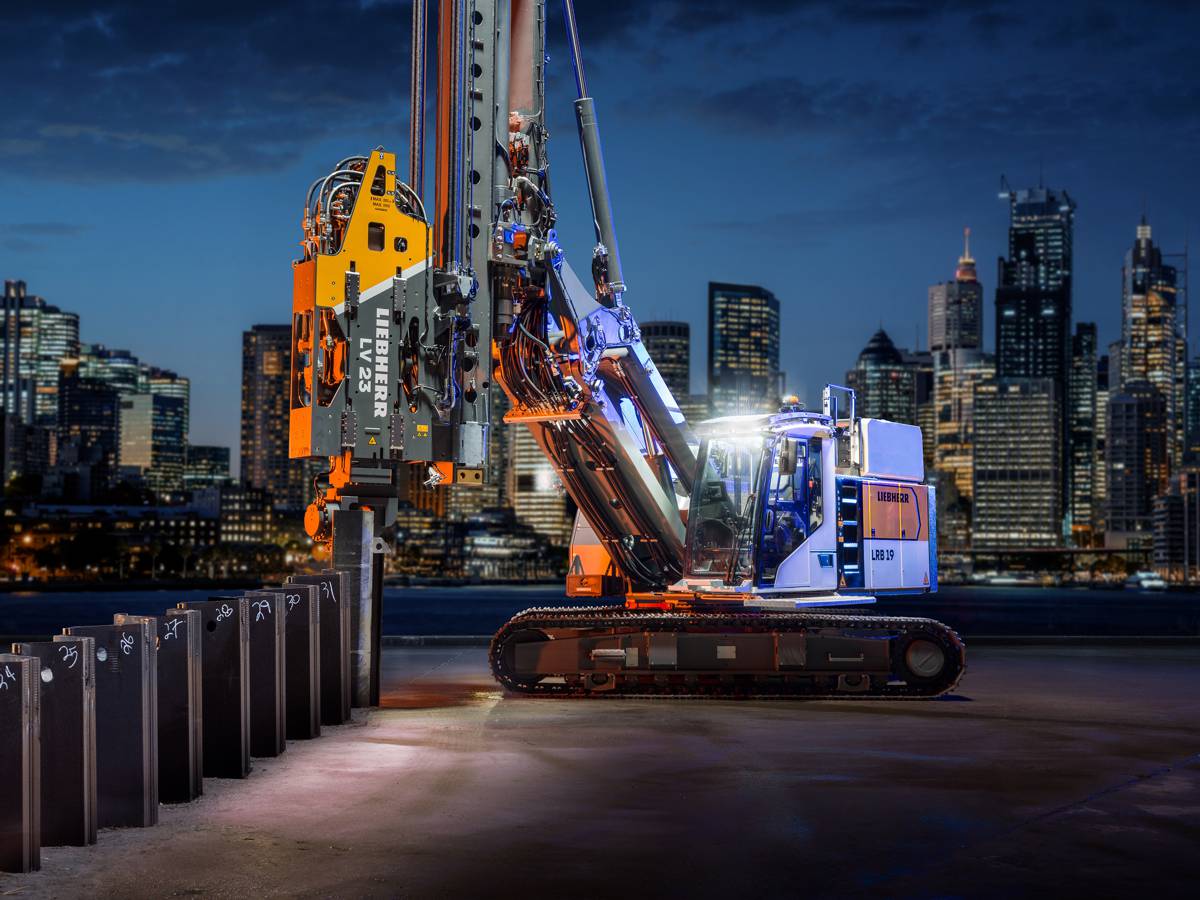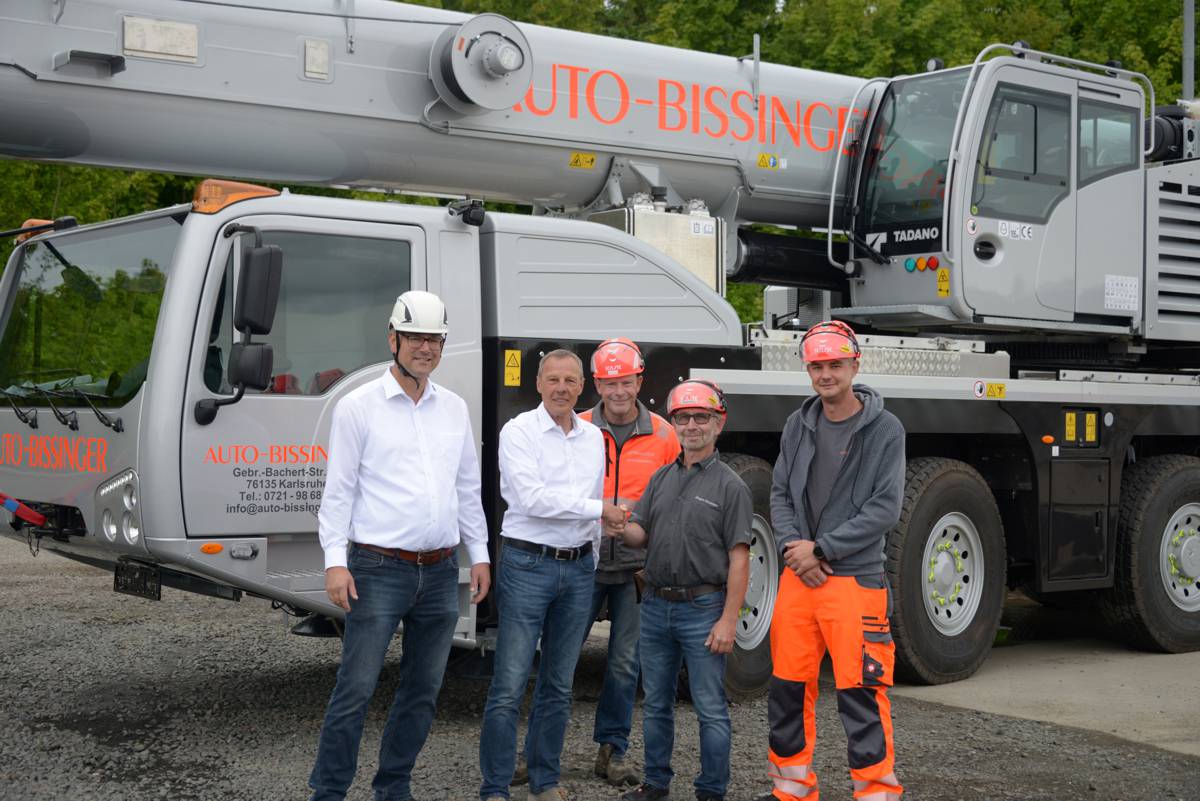All-wheel steering for Construction Machines enabled by EHLA PLUS
Electro-hydraulic steering systems for rear axles have been standard in commercial vehicles and complex construction machinery for many years.
In the case of commercial vehicles, the use of electro-hydraulic auxiliary steering is primarily to ensure compliance with the legal requirements. Without a steered rear axle the legally defined minimum turning circle, also known as “BOKraft-Kreis” in German, cannot be maintained.
In addition to compliance with legal requirements, complex construction machines such as mobile cranes, have to meet very high requirements for manoeuvrability, which can only be met by electro-hydraulic auxiliary steering. Steering modes such as crab steering, manual steering intervention or automatic rear swing out suppression are standard here, as is the complete power decoupling of the rear axles from the front axle.

Simple construction machines, such as 2-axle loaders, usually have hydrostatic front axle steering (e.g. Orbitrol) and often rear axle steering. However, this is purely hydraulic and may only be switched on manually on the actual construction site, which makes application possibilities and flexibility, as well as operating comfort, very limited.
MOBIL ELEKTRONIK from Langenbrettach, Germany, has committed itself to providing these vehicles with the same features that are already standard in mobile cranes. Operation will be easy and convenient with the steering direction mode changeable at any wheel position, with the synchronization of the axles with each other done automatically.
The EHLA PLUS auxiliary steering system has been in use for a long time and is well known.

Approval for Public Road Traffic and Safety
The EHLA ® PLUS auxiliary steering system complies with the requirements of ECE R79 Annex 6, so that it can be approved for use on public roads. This can also be important for smaller construction machines so they can drive on public roads.
The steering system constantly monitors itself, with system faults reliably detected and the driver informed accordingly. The controllability of the vehicle is always ensured via a defined fall back level. Assistance features of the EHLA PLUS steering system also increase driving stability, which increases driver safety.

New Components
MOBIL ELEKTRONIK has revised some components of their EHLA PLUS steering system to make this established steering system also attractive for smaller, 2-axle vehicles.
Already the housing (IP Code IP6K9K) offers advantages because it can also be mounted outside the cabin, where extreme conditions prevail due to dirt, water and salt. Due to a completely new hardware and software architecture, a safety level up to Pl e / ASIL D can be achieved.

The hydraulic components were also carefully examined and the result was a compact proportional hydraulic unit in which all necessary valves are integrated, resulting in less tubing, fewer components and less assembly time.
Advantages of EHLA PLUS on the Construction Site
The main advantages of the EHLA PLUS is on the construction site, where many steering modes are available to manoeuvre vehicles in different situations, such as all-wheel steering, crab steering or manual steering of the rear axle.
Another important steering mode is the automatic rear swing-out suppression, which is of great importance when driving around obstacles.
This steering mode prevents the rear of the vehicle from swinging out when manoeuvring by means of the rear axle turning later than the front axle. This cannot be achieved with a purely hydraulic steering system.
Flexibility and Convenience
In contrast to purely hydraulic steering, the use of electronics in the form of the safety steering computer makes it possible for individual steering modes, as well as the entire steering system, to be adjusted to the respective vehicle type or to special customer requirements just by setting the parameters.
This means that regardless of wheelbases, tyre sizes and wheel loads, the components installed, such as steering cylinder and steering lever arm, are always the same. A clear advantage in purchasing, logistics and replacement parts.
Steering modes can be either selected via a MOBIL ELEKTRONIK control panel, or alternatively via an existing terminal in the vehicle which can be connected to the safety steering computer via CAN.

Further Savings of Expenses
The automatic hydraulic centring and locking of the rear axle in exact straight ahead position, when driving on public roads, ensures optimum directional stability with minimum tyre wear. This is an advantage that is particularly relevant for rental vehicles.
The hydraulic supply for the rear axle steered with EHLA PLUS is provided from the vehicle’s power unit. The rear axle steering is hydraulically and mechanically completely decoupled from the front axle steering. In addition to the driver comfort and the safety advantages, this system also offers cost benefits. The hydrostatic steering (Orbitrol) of the front axle can be designed correspondingly smaller with regard to the steering power to be produced.
Competitive Advantages
The higher costs for the components of the steering system are more than compensated for by savings in the mechanical components, shorter assembly times, and above all by the many advantages.
With EHLA PLUS, vehicles can be upgraded.

MOBIL ELEKTRONIK at the Bauma 2019 in Munich
In addition to this EHLA PLUS concept for small construction machines MOBIL ELEKTRONIK will also be presenting further innovations and solutions at bauma 2019. Hall A3 / Booth 115




















